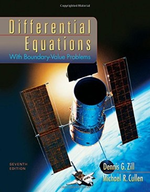Aquifers and Darcys Law According to the Sacramento, California, Department of
Chapter 3, Problem 15(choose chapter or problem)
Aquifers and Darcys Law According to the Sacramento, California, Department of Utilities, approximately 15% of the water source for Sacramento comes from aquifers. Unlike water sources such as rivers or lakes that lie above ground, an aquifer is an underground layer of a porous material that contains water. The water may reside in the void spaces between rocks or in the cracks of the rocks. Because of the material lying above, the water is subjected to pressure that drives the fluid motion. Darcys law is a generalized relationship to describe the flow of a fluid through a porous medium. It shows the flow rate of a fluid through a container as a function of the cross sectional area, elevation and fluid pressure. The configuration that we will consider in this problem is what is called a one-dimensional flow problem. Consider the flow column as shown in Figure 3.R.5. As indicated by the arrows, the fluid flow is from left to right through a container with a circular cross section. The container is filled with a porous material (for example, pebbles, sand, or cotton) that allows for the fluid to flow. At the entrance and the exit of the container are piezometers that measure the hydraulic head, that is, the water pressure per unit weight, by reporting the height of the water column. The difference in the water heights in the pizeometers is denoted h. For this configuration Darcy experimentally calculated that Q AK h L where length is measured in meters (m) and time in seconds (s): Q volumetric flow rate (m3 /s) A cross-sectional flow area, perpendicular to the flow direction (m2 ) K hydraulic conductivity (m/s) L flow path length (m) h hydraulic head difference (m). Since the hydraulic head at a specific point is the sum of the pressure head and the elevation, the flow rate can berewritten as where p water pressure (N/m2 ) r water density (kg/m3 ) g gravitational acceleration (m/s2 ) y elevation (m). A more general form of the equation results when the limit of h with respect to the flow direction (x as shown in Figure 3.R.5) is evaluated as the flow path length Performing this calculation yields where the sign change reflects the fact that the hydraulic head always decreases in the direction of flow. The volumetric flow per unit area is called the Darcy flux q and is defined by the differential equation (1) where q is measured in m/s. (a) Assume that the fluid density r and the Darcy flux q are functions of x. Solve (1) for the pressure p. You may assume that K and g are constants. (b) Suppose the Darcy flux is negatively valued, that is, q 0. What does this say about the ratio pr? Specifically, is the ratio between the pressure and the density increasing or decreasing with respect to x? Assume that the elevation y of the cylinder is fixed. What can be said about the ratio pr if the Darcy flux is zero? (c) Assume that the fluid density r is constant. Solve (1) for the pressure p(x) when the Darcy flux is proportional to the pressure, that is, q ap, where a is a constant of proportionality. Sketch the family of solutions for the pressure. (d) Now if we assume that the pressure p is constant but the density r is a function of x, then Darcy flux is a function of x. Solve (1) for the density r(x). Solve (1) for the density r(x) when the Darcy flux is proportional to the density, q br, where b is a constant of proportionality. (e) Assume that the Darcy flux is q(x) sin ex and the density function is Use a CAS to plot the pressure p(x) over the interval . Suppose that Kg 1 and that the pressure at the left end point (x 0) is normalized to 1. Assume that the elevation y is constant. Explain the physical implications of your result.
Unfortunately, we don't have that question answered yet. But you can get it answered in just 5 hours by Logging in or Becoming a subscriber.
Becoming a subscriber
Or look for another answer
